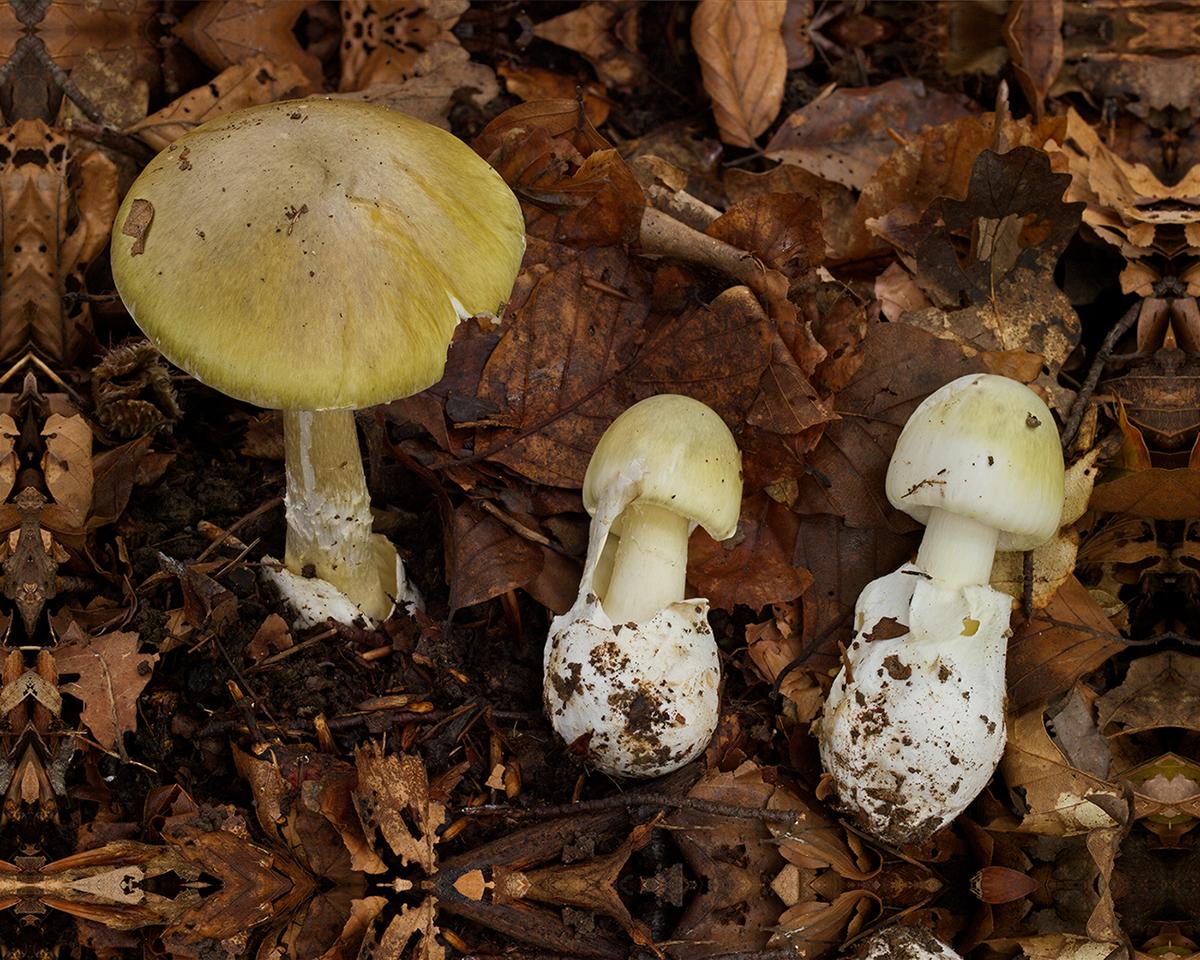Mushroom season has begun. But caution is advised when picking mushrooms, as not all of them are edible. MHH is currently seeing an increase in victims of life-threatening mushroom poisoning.

Consumption is life-threatening: green death cap mushrooms in various stages of growth; copyright: Andreas Kunze/German Society for Mycology e.V.
Warning from Hannover Medical School (MHH): In northern Germany an increasing number of people are being admitted with severe mushroom poisoning. This month, two people have already had to be treated with the antidote in the intensive care unit – fortunately with success. Most of the patients come from countries such as Russia, Ukraine, the Middle East and Afghanistan. The amanita, also known as death cap mushroom is primarily responsible for the cases of poisoning. ‘The death cap mushroom is less common in the home countries of those affected. Here in Germany, due to a lack of knowledge, the dangers of mushroom picking are often not taken seriously enough,’ explains Professor Richard Taubert, Head of Transplant Hepatology. Insufficient knowledge of the individual mushroom species can quickly lead to poisoning and liver failure. Even apps or mushroom books do not protect against confusion.
Death cap mushrooms destroy the liver
The death cap mushroom is one of the most poisonous mushrooms in Germany and is responsible for 90 percent of all fatal mushroom poisonings. It is very dangerous because its poison only takes effect several hours after consumption, by which time it has already been absorbed throughout the body. Initial symptoms include nausea, vomiting and diarrhoea – similar to a gastrointestinal infection. After one to two days, liver damage occurs, which may be accompanied by blood clotting and kidney dysfunction. ‘In the worst case, the liver stops functioning, so that only a liver transplant can save the patient's life,’ says Professor Taubert.
Consult a mushroom expert
Due to the high risk involved, mushroom pickers should have the mushrooms they find identified by a mushroom expert before eating them. The Poison Information Centre North also advises attending training courses run by the German Society for Mycology before going mushroom picking. Training courses can improve knowledge of the different species. Apps that help identify mushrooms should not be relied upon.
Call an emergency physician if you suspect poisoning
If you suspect mushroom poisoning, call an emergency physician immediately. To facilitate diagnosis, keep any mushroom remains and vomit. Treatment with the antidote should be started as soon as poisoning by death cap mushrooms is suspected. Poisoning is then confirmed or ruled out by detecting the toxin in the urine.
The death cap mushroom grows in deciduous and mixed deciduous forests from August to October. It can be recognised by its three to 15 centimetre wide cap, which is bell-shaped to umbrella-shaped. There are white gills on the underside. The colour of the poisonous mushroom is green, green-yellow or white.
►Rapid assistance in cases of poisoning is also available from the Poison Information Centre North on (0551) 19240. The telephone line is manned around the clock.
Text: Team Communications